Notion of Pakistan
Faiz Ahmad Faiz, expressed his disillusionment with the partition in his famous verse:
Vointizarthajis-ka, ye vosahar to nahin,
Ye vosahar to nahinjiskiarzulekar
Chale the yarke mil jaegikahinnakahin.
The translation by Victor Kiernan, is as follows:
This is not the dawn of which there was expectation;
This is not the dawn with longing for which
The friends set out, (convinced) that somewhere they would be met with.’
Faiz was a progressive writer, who spent years in jail or exile. For those, who supported partition, philosophical justification came from Iqbal’s poetry and political mandate from Lahore Resolution adopted by the Muslim League on 23rd March, 1940. These are two very different visions, and provide different standards to judge the progress of Pakistan in past seven decades of its existence. The establishment view may reject the revolutionary’s perspective. Even taking the vision embodied by the Lahore Resolution as the basis, does Pakistan meet the test? Rejection of strong Federation, and protection of minorities, were two central tenets of the Lahore Resolution denied ever since in independent Pakistan. Does an increasingly intolerant society, and a polity dominated by the military, reflect Jinnah’s vision?
Pakistan is the only Muslim country created on the basis of religion. Does this justify denial of national or ethnic identities? Separation of Bangladesh was an emphatic rejection of the idea of a State based on religion. The North West Frontier Province (NWFP) and Balochistan had rejected the Muslim League’s vision at the time of partition itself. Growing Islamisation not only marginalized the minorities, but also gave rise to Shia-Sunni tensions.
Pakistan is the only Muslim country to acquire nuclear weapons. It has an Army, which has directly or indirectly ruled the country for much of its existence. While the Army has severely circumscribed the role of civilian leadership, it has been unable or unwilling to curb jehadi groups who challenge the writ of State. How does Pakistan compare with other countries of South Asia in terms of socio-economic indices? This article seeks to explore some of these questions based on the views of Pakistani leaders, and international sources.
Lahore Resolution
The Lahore Resolution of the All India Muslim League of 23rd March 1940 is taken as the basis of Pakistan. It stated in paragraph 3:
“Resolved that it is the considered view of this session of the All India Muslim League that no constitutional plan will be workable in this country or acceptable to Muslims unless it is designated on the following basic principle, namely that geographically contiguous units are demarcated into regions which should be so constituted, with such territorial readjustments as may be necessary, that the areas in which Muslims are numerically in a majority as in the North-Western and Eastern Zones of India, should be grouped to constitute “independent states” in which the constituent units shall be autonomous and sovereign.”
The resolution did not call for single, independent, state. It called for “independent states”. The plurality inherent in the original scheme was a recognition of different ethnicities of the population of the area – a distinction deliberately slurred over in the subsequent interpretations of the ideology of Pakistan. Specific reference to “independent states” - that shall be not only “autonomous”, but “sovereign”, leaves no doubt about the intent that these were to be separate states. What followed was betrayal of the idea of Pakistan with suppression of ethnic identity and political demands of constituent groups.
The Lahore Resolution had an interesting genesis in the Viceroy’s Council. As Wali Khan, the Pashtun leader has noted1:
‘On 12 March 1940, Viceroy Lord Linlithgow wrote to the Secretary of State for India: ‘Upon my instruction Zafarullah wrote a memorandum on the subject, Two Dominion States. I have already sent it to your attention.’ Wali Khan writes further: ‘The Viceroy’s letter to the Secretary of State was written on 12 April 1940. The Pakistan scheme had been dispatched earlier. Twelve days later the Muslim League adopted this very proposal at their Lahore Annual meeting. It was called Pakistan Agreement.’ Wali Khan’s observations are based on British records of correspondence between the Viceroy and the Secretary of State.
Pakistan adopted a Federal structure, which the Muslim League had previously opposed. In the 1950’s, all provinces of West Pakistan were grouped as “One unit”. This was to create a counter-balance to East Pakistan. This denied the principle of majority rule which is the basis of democracy. Eventually, it led to separation of East Pakistan. But its immediate victims were Sindh, Balochistan and NWFP, the three smaller provinces, which were put under the control of Punjab, which was the largest group in West Pakistan under “One Unit” formula. Bengalis broke away from Pakistan in 1971 when Bangladesh was created. But, Baloch and Mohajirs continue to suffer and have been subjected to military operations. Pashtun nationalism has been undermined by the rise of Islamic fundamentalism in NWFP, re-named as Khyber Pakhtoonkhwa.
Minorities
The Lahore Resolution also dealt with the minority question. This was important in the context of the mixed population of the sub-continent. The resolution called for safeguards for the rights of minorities on both side of the divide. The inter-locking set of obligations in Muslim majority and minority areas was to ensure their protection. This was also described sometimes as “mutual hostage” situation. While India provided for protection of minorities in the Constitution, the process of erosion of minority rights was very rapid in Pakistan after the death of Jinnah.
Jinnah said in his speech on 14th August:
“You are free. You are free to go to your temples, you are free to go to your mosques or to any other place of worship in this state of Pakistan. You may belong to any religion or caste or creed – that has nothing to do with the business of the State.”
Jinnah’s speech is treated as the liberal’s touchstone in Pakistan. But public persona have to be judged by their public actions. Jinnah described Hindus and Muslims as two separate nations and gave call for ‘Direct Action’. He allowed the British to elevate him as the sole representative of Muslims to divide the country, and punish the Congress for non-co-operation with British war efforts.
Pashtun Question
Wali Khan states: ‘The people of the Frontier opposed the referendum. Their stand was clear. If its purpose was to obtain public opinion, it had already been ascertained a year ago during the elections to the Legislative Assembly. The Khudai Khidmatgars had defeated all the provincial parties including the Muslim League.’2 NWFP was ruled by Khudai Khidmatgars, who were Congress allies, and opposed to Partition.
Wali Khan gives the second reason for opposing referendum: ‘What was the need for holding a referendum when they [Muslim League and Congress] had accepted the plan of partition with NWFP being a part of Pakistan?’ Wali Khan adds further: ‘The Khudai Khidmatgars realized that the British were bent on holding a referendum. They disagreed with the idea but felt that if the British authorities wanted to perform the ritual, the people of the province who were not willing to opt either for India or Pakistan, should be free to establish a free State of their own. The Referendum should be held not only on the issue of partition of the country but also on the issue of an independent Pakhtoonistan. This demand was rejected out of hand by Mountbatten.’ Referendum did not have legitimacy, as the majority party in the State boycotted it.
Neither Pashtun leaders in Pakistan, nor Afghanistan, have accepted the Durand Line. This stand was maintained by successive Afghan governments, including the Taliban. It is worth recalling that Afghanistan voted against Pakistan’s admission to the United Nations.
Balochistan
Balochistan’s accession to Pakistan cannot be justified either on ground of right to self-determination, or legality. Both the Ruler and the elected Assembly of Kalat had opted for independence at the time of partition. Kalat State formed most of present day Balochistan. As Selig Harrison has mentioned:
“In a memorandum submitted to the British Cabinet Mission in March 1946, the Khan asserted that the government or governments succeeding the Raj would inherit only the treaty relationships of the colonial government in New Delhi, not those of Whitehall. Once the British withdrew, the memorandum said, Kalat would retain the independence it had enjoyed prior to 1876.”3
Pakistani historians base Pakistan’s claim on the deliberations of pro-Pakistan assembly of Baloch leaders in Quetta on June 29, 1947. As Selig Harrison has argued, members of this Assembly were appointed by the British, and their recommendations related only to the small area known as British Balochistan. Selig Harrison has qouted Ghaus Bux Bizenjo, who was a member of the Kalat Assembly: “We don’t want to amalgamate with Pakistan.” Bizenjo added: “If Pakistan …….forces us to accept this fate, flying in the face of democratic principles, every Baluch will fight for his freedom.” In the event, Pakistan chose to send in the army on April 1, 1948 to arrest Khan of Kalat. The Khan surrendered, though his brother Prince Abdul Karim continued to fight. The irony was that Jinnah had argued Kalat’s case for indpendence in front of the Cabinet Mission. Pakistan Army launched its second operation against Kalat in October, 1958. The third operation was launched in the 1970’s by Bhutto. Pakistan deployed H-1 helicopter gunships and F-14 fighter jets against Baloch population. The fourth military operation is still continuing.
The Baloch independence movement is no longer confined to feudal lords or tribal leaders. The leadership of Baloch Liberation Front is drawn from the middle class, and coastal belt, while the traditional, tribal leadership had come from the north. Ruthless exploitation and successive military crack-downs, has driven even the moderate leadership, who tried assimilation with Pakistan, into rebellion. Nawab Akbar Bugti, leader of Bugti tribe, was Chief Minister of Balochistan during the 1970’s. His tribe came from Dera Bugti, where Sui gas field was located. He protested about exploitation of Sui gas by Pakistan, which did not bring economic dividend to the local population. Bugti was killed by Pakistan Army, along with his followers on 26th August, 2006. Differential pricing policy for gas produced in different provinces, is calculated to deprive Baloch people of their fair share of royalty. “Till 2004 Sui gas was priced at Rs 22 per mmbtu, while gas produced in Sindh and Punjab respectively was priced at Rs. 126 per mmbtu and Rs. 180 per mmbtu.4 Since then, the price has been slightly adjusted, though the difference still remains. “Baloch gas field well head price now is Rs. 66.34 per mmbtu, while the price for gas produced in Sindh and Punjab is Rs. 142.57 and Rs. 162.93 respectively”5.
China Pakistan Economic Corridor (CPEC)
Development of Gwadar Port as part of CPEC is aimed at utilising Balochistan’s location for China’s strategic purposes. In a statement in the Human Rights Council in Geneva on 11th March 2016, Baloch representative stated: ‘CPEC is not only depriving the local Baloch people of their land and natural resources, like all such projects in the past, but is turning them into a minority in their homeland.’
In a statement on 20th June, 2016, Abdul Nawaz Bugti said: ‘The military is using brutal force to compel the local populace to migrate from the areas where projects regarding the China Pakistan Economic Corridor are taking place.’ Baloch human rights activists stated further in the Human Rights Council: ‘Only 8 of total 330 projects are allocated for Balochistan while most of the 16,000 security personnel are deployed there, which raises fear of more rights violations by state forces.’ Interestingly, the statement pointed out: ‘Recently, UN designated terrorist Hafiz Saeed has announced to ‘defend the CPEC by all means’ which further exposes the nexus between Pakistani state and terrorist groups against the secular Baloch and their peaceful demand.’
After 9/11, Al Qaida leadership fleeing Afghanistan was settled in Balochistan. Functioning of the ‘Quetta Shura’ of Taliban could not have been possible without the complicity, and protection of Pakistan’s state agencies. There has been rise in sectarian clashes, and targetted killings of Shia in Balochistan as a result of influx of groups like Lashkar-e-Jhangvi (LeJ). LeJ claimed that their recent attack against Shias in Khujestan was carried out in collaberation with Islamis State (IS) 0r Daesh. Import of religious extremism, and sectarian groups, runs counter to the narrative of Baloch nationalist rebellion, and is calculated to weaken it.
According to a report by Dawn of October 15, 2014, more than 300,000 Shias and Hindus have left the province in last 10 years. Pakistan security agencies have continued with the policy of ‘Kill and Dump’.
Mohajirs and MQM
After Liaqat Ali Khan’s assassination, Mohajirs gradually lost political power in the State they had helped to create. Their dominance of bureaucracy was challenged in the 1970’s, when Bhutto government introduced job reservations on the basis of language. Mohajirs were better educated than Sindhis, who had low representation in government jobs. In the 1980’s, General Zia initiated the policy of pitting the two groups against each other. Partly this was in response to Movement for Restoration of Democracy (MRD), and partly to curb the rise of Sindhi nationalism. Zia did not succeed in creating a pro-Government party. But he succeeded in dividing Sindh.
The Mohajir Qaumi Movement (MQM) has tried to break-out of its ethnic straight jacket, and re-named itself Muttahida Qaumi Movement (United Nationalities/ethnic Movement). Though, it did not have electoral success outside the province, it has managed to maintain a strong grip in urban Sindh. Both its success and failure testifies to the ethnic divide in the province.
Operation Clean-up
‘Operation Clean-up’ was launched in Sindh in June 1992. The ostensible objective was to fight dacoities and break-down of law and order in interior Sindh. When the operation unfolded, it became clear that the thrust of the army operation was against MQM followers. The irony was that Mohajirs, who had founded Pakistan, became victims of the military operation by Pakistan Army. At one stage, more than 100,000 troops of Pakistan Army, apart from Rangers, were engaged in the operation. The operation resulted in large number of arrests, and enforced disappearances. MQM President and other senior leaders, went underground. The Army tried to set up a rival MQM faction called MQM – Haqiqi, led by Afaq Ahmad and Amir Khan, though it failed to win acceptability in ensuing elections. Selective focus on the urban areas, while interior Sindh was witnessing complete break-down of law and order, also betrayed the Pakistani Army’s bias. The operation, petered out after the death of the then Army Chief General Asif Nawaz Janjua.
The second operation was launched two decades later in Sindh. This time it had wider goals, and also targeted Pakistan Peoples Party (PPP) politicians. As in 1992, when the first ‘Operation Clean-up’ was launched, the Prime Minister once again is Nawaz Sharif. But this time, he has majority in the National Assembly, and does not need MQM’s support. Mohajirs are in weaker position.
Altaf Hussain’s statement describing Pakistan as a “cancer in the world”, reflects the desperation of the Mohajirs. The security establishment retaliated by forcing MQM’s legislative wing led by Farook Sattar to disassociate itself from the MQM led by London based Altaf Hussain.
Bihari Problem
‘Biharis’ are those non-bengalis who migrated to East Pakistan in 1947, and sided with Pakistan Army in 1971. After Bangladesh’s emergence, Bhutto agreed in 1973 to take them back. This commitment has never been fulfilled. PPP governments have been wary of the idea, as return of Biharis would tilt the population balance within Sindh in favour of Mohajirs. Nawaz Sharif has made some gestures, partly for the same reason – that Mohajirs will settle in Sindh and thus divide Bhutto’s home turf. Lukewarm attitude to the return of Biharis has to be contrasted with Pakistan’s enthusiasm for “Kashmir” cause. Return of Biharis does not promise to bring territory. Support for “Kashmir cause” is essentially a land grab.
While Baloch, Sindhis and Mohajirs are targeted by the military, the operation was not extended to Punjab, which has become a hotbed of religious extremism.
Pakistan Occupied Kashmir (POK)
While Pakistan denied the right of self-determination of the Pashtun and Baloch, it has agitated the demand for Plebiscite in J&K. In fact, it has been equally unmindful of the rights of the people of J&K. Muslim Conference signed a secret agreement in Karachi in 1949 agreeing to separation of Gilgit and Baltistan from ‘Azad Kashmir’, and handing over control of both the Northern Areas and POK to Pakistan. This reduced the ‘Azad Kashmir’ government to the status of a municipality, despite the grandiose titles assumed by its office bearers. The Agreement amounted to a fundamental departure from UN resolution and usurping the territory without reference to the will of the people.
Under the United Nations Commission for India and Pakistan (UNCIP) resolution of 1948, withdrawal of forces under Pakistan’s control was a condition precedent for holding of Plebiscite. Pakistan’s continued occupation of POK therefore is a violation of UN resolutions in letter and spirit. At best, ‘Azad Kashmir’ is a legal fiction. The territory has been ruled directly from Islamabad. Till 1973, the territory was directly run by a Joint Secretary in Islamabad. The first Constitution of ‘Azad Kashmir’ was attempted in 1974. The Constitution forbids questioning of POK’s ‘accession’ to Pakistan, making self-determination irrelevant.
Maintaining an artificial distinction between POK and Pakistan to keep alive the chimera of Plebiscite has deprived the people of POK from any opportunity of participation in electing the government of Islamabad, which actually controls it. In the absence of any safeguard to preserve the State’s special character, like Article 370 on the Indian side, POK has been exposed to creeping influx of outsiders changing demographic composition of the territory. Pakistan has ceded part of POK territory to China in 1961. It has recently agreed to China Pakistan Economic Corridor (CPEC) to pass through POK. Both the actions make it clear that it is least concerned with the State and its people.
Islamisation
General Zia is often blamed for Islamisation of Pakistan. The process started much earlier. Pakistan adopted ‘Objectives Resolution’ in 1952, which made Pakistan an Islamic State. Bhutto, who is sometimes projected as the liberal face of Pakistan, brought it into the Constitution adopted in 1973, and gave it over-riding force, undermining minority rights. During his last phase, when he was fighting street agitations launched by Jamaat-e-Islami (JeI), Bhutto tried to win over the fundamentalists by declaring Qadianis as non-Muslims. This was ironical, especially since Sir Zafarullah Khan, who authored the Lahore Resolution and pleaded Pakistan’s case in the UN in 1948, was a Qadiani.
Under Zia, the process of Islamisation intensified. Adoption of Shariat law has made minorities second class citizens. The worst affected are Hindus, who are the largest minority group in Pakistan.
Sectarianism
Promotion of Sharia by General Zia naturally raised the question: ‘whose version of Sharia?’ This was the beginning of Tehrik-e-Nifaz-e-Fikh-e-Zafariyah (TNFZ), the Shia organization in Pakistan. As Pakistan moved closer to Saudi Arabia, the reaction was accentuated in Pakistan.
A number of extremist Sunni groups sprang up in Pakistan, which has led to increase in Shia killings. The latest suicide attack on a Sufi shrine in Balochistan’s Khuzdar district on 12 November, 2016 resulted in 52 deaths and more than 100 injured. Shia killings have also had spill-over effect on Pakistan’s relations with Iran. The collateral damage seems acceptable to Pakistani Army. As long as the military’s calculus is not changed, the problem will continue.
Terrorism and Extremist Philosophies
Pakistan has used non-state actors to advance its territorial interests since 1947, when it sent tribal raiders in Kashmir. This was repeated in 1965 as part of ‘Operation Gibraltar’. The policy was perfected during General Zia’s period to wage war in Afghanistan, and create trouble first in Punjab and then J&K. The mainstream parties struck alliances with religious parties. The Taliban were created by General Nasrullah Babar, Benazir’s Interior Minister and Fazlur-Rehman. Taliban cadre were drawn from Jamiat Ulema-e-Islam (JUI) - (F) run Madrasas.
The compact between the State and the clergy started showing strains when General Musharraf made tactical compromise with the Americans in the wake of 9/11. This produced a series of attacks on Pakistan government institutions over the next decade. This included 2 assassination attempts on Musharraf’s life, Lal Masjid episode, attacks on Qamran air base and Mehran naval base.
After December 2014 attack by Tehrik-e-Taliban Pakistan (TTP) on an army run school in Peshawar, in which 150 persons, mostly children were killed, Pakistan Government adopted National Action Plan (NAP) to counter terrorism. This was followed by lifting of moratorium on death penalty, and establishment of special military courts to try out terrorism suspects, as demanded by the Army. Nevertheless, most of the 176 executions since have been for non-terrorism related offences. The problem lies not in the absence of legislative frame-work, or mechanism, but lack of willingness. Pakistan military continues to maintain distinction between “good” and “bad” terrorists, and protects organizations like Lashka-e-Taiba (LeT) , Jaish-e-Mohammed, and Haqqani Group, which serve their strategic interest. Till Pakistan Army’s calculus is changed, there will be no change in the ground situation.
After the Uri attack, the English language newspaper Dawn published an article on deliberations in Pakistan’s cabinet, where civilian leadership pleaded their inability to take action as security agencies continue to protect terrorist groups. The story resulted in its author being placed on Exit Control List, and resignation of the Minister suspected of leaking the news, which embarrassed the Army. The exchange between the civilian and military leadership was borne out of Pakistan’s complete isolation in the region and beyond. But it simply resulted in a cover-up, not a change in the establishment’s policy.
Nuclear Jehad
The policy of sponsoring cross-border terrorism has its concomitant in holding out the nuclear threat to deter India from retaliating. In case of NATO, First Use Doctrine was based on acceptance of territorial status quo in Europe. Helsinki Accord outlawed use of force to change borders. Pakistan combines ‘First Use’ posture with a policy of challenging the territorial status quo in J&K. This makes it more de-stabilizing. Using the nuclear umbrella to continue cross-border terrorism adds a third dimension to Pakistan’s nuclear doctrine. It amounts to making the country’s existence hostage to actions of so-called non-state actors. Recent ‘Surgical Strike’ by India has conveyed the Indian resolve to break this cycle.
The rift between Pakistani establishment and terrorist groups after 9/11, and more recently after the launch of Operation Zarb-e-Azb in North Waziristan, has added to the complexity of decision-making on both sides. If any of these groups lay their hands on Pakistan’s nuclear assets, it will create a nightmare scenario for the international community, and Pakistan itself. Pakistan cannot deny responsibility for ‘unauthorized’ use of nuclear weapons by non-State actors, and will have to absorb punishment.
Human Rights
Pakistan has ratified the International Covenant on Civil and Political Rights with sweeping reservations, which has the effect of severely curtailing these rights. Thus Pakistan has given the State agencies scope to violate universally recognized human rights with impunity, while making a cosmetic gesture to confirm to international norms. Pakistani reservations have been objected to by 23 European States, US and Uruguay. The US objection mentions: ‘These reservations raise serious concerns because they both obscure the extent to which Pakistan intends to modify its substantive obligations under the Covenant and also foreclose the ability of other parties to evaluate Pakistan’s implementation through periodic reporting. As a result, the United States considers the totality of Pakistan’s reservations to be incompatible with the object and purpose of the Covenant.’
Pakistan has similarly ratified the Convention against Torture with sweeping reservations. This has been objected to by a number of European countries and US as nullifying the international commitments it professes to uphold.
Socio-Economic Development
According to Stockholm International Peace Research Institute (SIPRI), Pakistan military expenditure is an astoundingly high 3.4 % of GDP. The necessary corollary of high defence expenditure and Jehad culture is poverty and poor development. Millenium Development Goals (MDGs) are the universally accepted measure of socio-economic development of a country. Pakistan has been falling behind on each of the targets voluntarily accepted by it. Within the over-all target, the progress of different provinces is highly uneven. As UNDP in its website on Pakistan notes, ‘Punjab, in lieu of its performance in most indicators, is far ahead in achieving MDGs as compared to other provinces.’ In case of Sindh and Balochistan especially, the story is very different. In case of Sindh, the UNDP notes ‘In general, at the current rate of progress, no MDG will be achieved in entirety in Sindh.’ The same report notes, ‘Balochistan is the worst performing province in most if not all areas of the Millenium Development Goals.’ Two of the most critical MDGs, where Sindh and Balochistan have fallen behind are: MDG (1) for eradication of extreme hunger and poverty and MDG (2) for achieving universal primary education. On both counts, these two provinces are far behind.
Why should Baluchistan, the state richest in natural resources, and smallest in population, remain poorest in socio-economic development? The answer lies in the exploitative nature of Pakistan dominated by Punjab, which has appropriated most of the natural resources.
Human Development Index (HDI)
According to UNDP’s Human Development Report 2015 on South Asia region, Pakistan is just ahead of war torn Afghanistan in HDI index, lagging behind all others: Sri Lanka (73), Maldives (104), India (130), Bhutan (132), Bangladesh (142), Nepal (145), Pakistan (147) and Afghanistan (171).
Pakistan’s GDP Growth
Based on Iinternational Monetary Fund (IMF) and World Bank figures, Statistics Times mentions: ‘During period 1980-2014, average GDP growth of Pakistan was 5.02 % compared to India’s 6.23 % in the same period.’
Conclusion
Pakistan was created as home for Muslims of the sub-continent. Today, 2/3rd of the Muslim population of the region lives outside Pakistan and enjoys higher socio-economic development. As UNDP report brings out, both India and Bangladesh have higher HDI ranking than Pakistan. The Muslims in India also enjoy democratic rights; the people of Pakistan have been directly or indirectly ruled by the military. Pakistan has evolved into a state dominated by the Army, and jehadi groups, far from Jinnah’s vision. The centralized State structure has institutionalized Punjabi domination over Sindhis, Baloch and Pashtuns, who are marginalized. The policy of using terrorist groups to advance Pakistan’s strategic interests in Afghanistan and J&K has undermined civil society and affected economic growth. Pakistan is now trapped in low growth trajectory, which it can escape only if it allocates more resources to economic development. Unless Pakistani military is willing to accept the logic of the situation, civilian leadership cannot bring about the change.
Pakistan’s existential threat comes from within, which cannot be resolved by nuclear build-up or search for new alliance partners.
End Notes :
1. ‘Facts are Facts – the untold story of India’s Partition’ by Wali Khan, Vikas Publishing House Pvt Ltd.
2. ‘Facts are Facts – the untold story of India’s Partition’ by Wali Khan, Vikas Publishing House Pvt Ltd.
3. ‘In Afghanistan’s Shadow’ by Selig Harrison.
4. Dawn News of September 28, 2009.
5. Daily Times of 20th September, 2015.
(The author is a former Indian Foreign Service Officer. Presently, he is a Distinguished Fellow at the VIF)
Published Date: 11th March 2017, Image Source: https://thewire.in

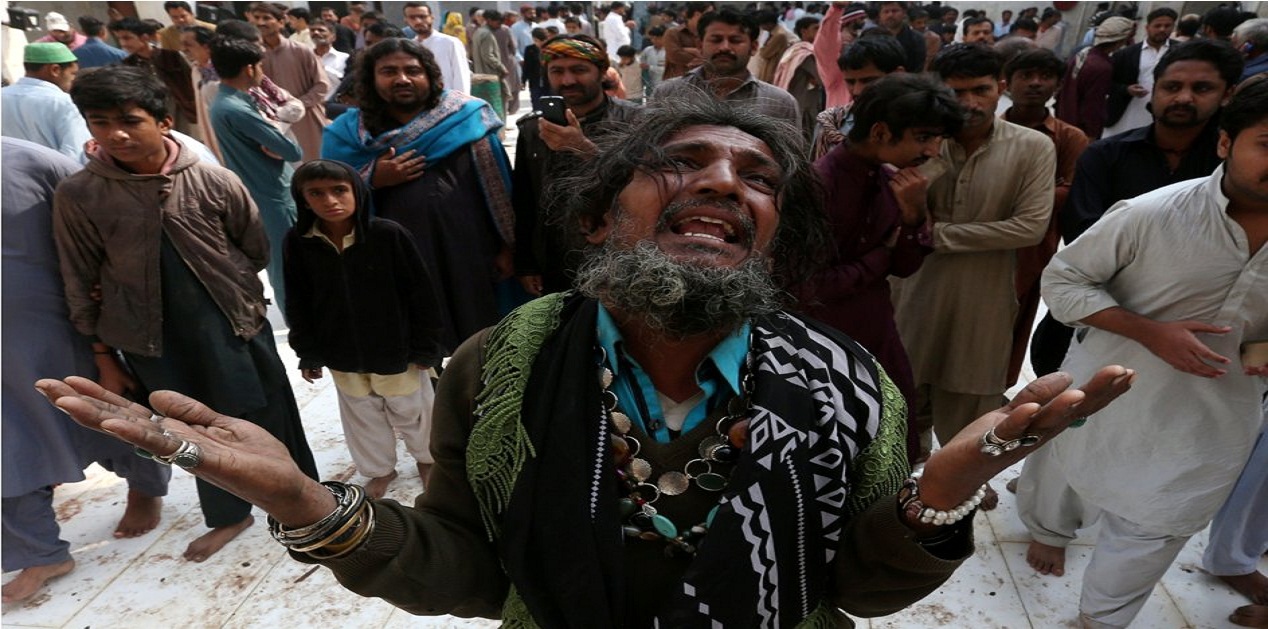
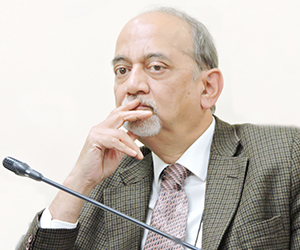

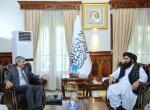
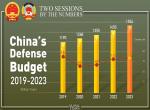
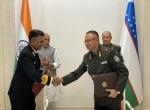
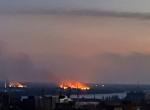
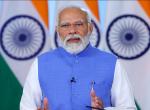
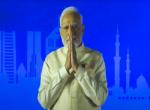
Post new comment